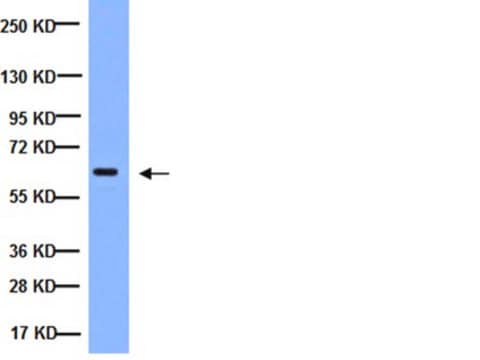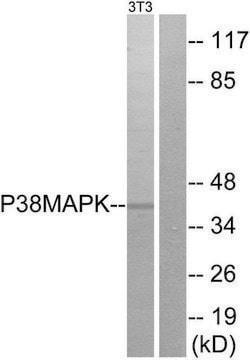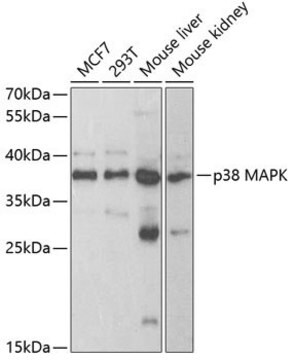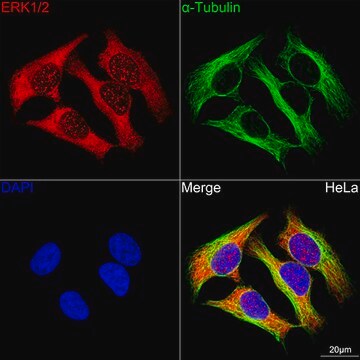05-797R
Anti-phospho-Erk1/2 (Thr202/Tyr204, Thr185/Tyr187)Antibody, recombinant clone AW39R, rabbit monoclonal
clone AW39R, Upstate®, from rabbit
Sinónimos:
Erk1, Erk2, p44-MAPK, p42-MAPK, MAPK2, PRKM2, p41mapk, PRKM1, p44, ERK2, P42MAPK, ERK, p42, MAPK1, ERT1, ERT2, Mitogen-activated protein kinase, MAP Kinase 2, MAP Kianse 1, MAPK
About This Item
Productos recomendados
biological source
rabbit
Quality Level
antibody form
purified immunoglobulin
antibody product type
primary antibodies
clone
AW39R, monoclonal
species reactivity
human, mouse, rat
manufacturer/tradename
Upstate®
technique(s)
multiplexing: suitable
western blot: suitable
isotype
IgG
shipped in
dry ice
target post-translational modification
phosphorylation ((pThr202/pTyr204), (pThr185/pTyr187))
Gene Information
human ... MAPK3(5595)
mouse ... Mapk3(26417)
rat ... Mapk3(50689)
General description
Specificity
Immunogen
Application
Signaling
MAP Kinases
Kinases & Phosphatases
Quality
Target description
Linkage
Physical form
Storage and Stability
Analysis Note
PDGF-treated NIH/3T3 cell lysates
Legal Information
Disclaimer
¿No encuentra el producto adecuado?
Pruebe nuestro Herramienta de selección de productos.
Storage Class
12 - Non Combustible Liquids
wgk_germany
WGK 1
flash_point_f
Not applicable
flash_point_c
Not applicable
Certificados de análisis (COA)
Busque Certificados de análisis (COA) introduciendo el número de lote del producto. Los números de lote se encuentran en la etiqueta del producto después de las palabras «Lot» o «Batch»
¿Ya tiene este producto?
Encuentre la documentación para los productos que ha comprado recientemente en la Biblioteca de documentos.
Nuestro equipo de científicos tiene experiencia en todas las áreas de investigación: Ciencias de la vida, Ciencia de los materiales, Síntesis química, Cromatografía, Analítica y muchas otras.
Póngase en contacto con el Servicio técnico








